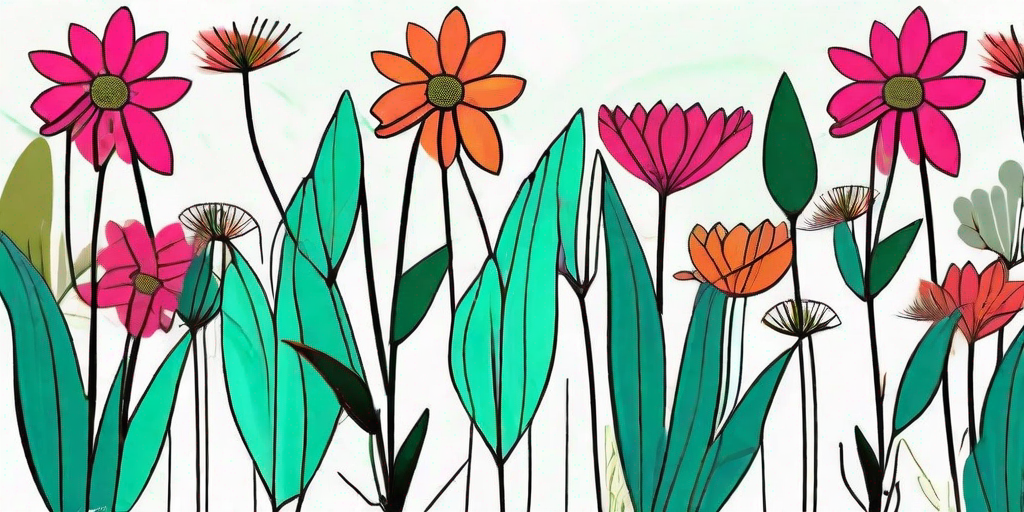
Baboon flowers, or Babiana as they are scientifically known, are a unique and vibrant addition to any garden. Originating from South Africa, these flowers are as wild and captivating as the primates they're named after. But don't worry, they won't swing from your garden trellis or steal your picnic food. Instead, they'll add a splash of color and a touch of the exotic to your outdoor space.
Understanding the Baboon Flower
The Baboon flower is a bulbous plant that belongs to the Iris family. It gets its quirky name from baboons' fondness for their corms (a type of bulb). But don't let that deter you – it's not a requirement to have a troop of baboons in your backyard to grow these flowers.
There are about 80 species of Babiana, each with its own charm. They come in a variety of colors, including blue, purple, red, and white. The flowers are usually funnel-shaped, and their leaves are pleated, adding an extra layer of visual interest.
The Baboon Flower's Natural Habitat
Baboon flowers thrive in the wild in the sandy soils of South Africa's western areas. They're used to a Mediterranean climate, with wet winters and dry summers. This makes them surprisingly easy to grow in similar climates around the world.
But don't despair if you live in a region with a different climate. With a little extra care and attention, you can still have a flourishing Baboon flower display.
How to Grow Baboon Flowers
Now that you're familiar with the Baboon flower, let's get down to the nitty-gritty: how to grow these beauties. It's not rocket science, but it does require some know-how.
Firstly, Baboon flowers are grown from corms, not seeds. These corms should be planted in autumn, in well-drained soil. They prefer full sun, but can tolerate partial shade. The corms should be planted about 2 inches deep and 3 inches apart.
Watering and Feeding Your Baboon Flowers
Baboon flowers need regular watering during their growth and blooming period. However, they don't like to have 'wet feet', so make sure your soil drains well. Overwatering can lead to rotting of the corms.
As for feeding, a slow-release bulb food is a good choice. Apply it at planting time and then again as the flowers start to bloom.
Dealing with Pests and Diseases
While Baboon flowers aren't particularly prone to pests and diseases, they're not immune either. Watch out for common bulb pests like aphids and bulb mites. If you notice any, treat your plants with an appropriate pesticide.
As for diseases, the most common issue is rotting due to overwatering or poor drainage. So again, make sure your soil drains well.
Admiring Your Baboon Flowers
Once your Baboon flowers are in bloom, it's time to sit back and admire them. Their vibrant colors and unique shape make them a standout addition to any garden. Plus, they make excellent cut flowers, so you can bring some of that wild beauty indoors.
But the beauty of Baboon flowers isn't just skin-deep. These flowers have a sweet scent that's particularly noticeable in the evening. So why not enjoy a sunset drink in your garden, surrounded by the scent of Baboon flowers?
Frequently Asked Questions
How long do Baboon flowers bloom for?
Baboon flowers typically bloom for about three weeks in spring. However, the exact timing can vary depending on the species and growing conditions.
Can I grow Baboon flowers in pots?
Absolutely! Baboon flowers can thrive in pots, as long as they have good drainage. This can be a great option if you have limited garden space, or if you want to bring some color to your patio or balcony.
Do Baboon flowers attract wildlife?
Yes, Baboon flowers can attract a range of wildlife, including bees and butterflies. So they're a great choice if you want to create a wildlife-friendly garden.
Conclusion
So there you have it – your guide to unleashing the wild beauty of Baboon flowers. Whether you're a seasoned gardener or a green-fingered newbie, these unique blooms are sure to bring a touch of the exotic to your garden. So why not give them a try? You might just find that they become the new 'king' of your jungle!















